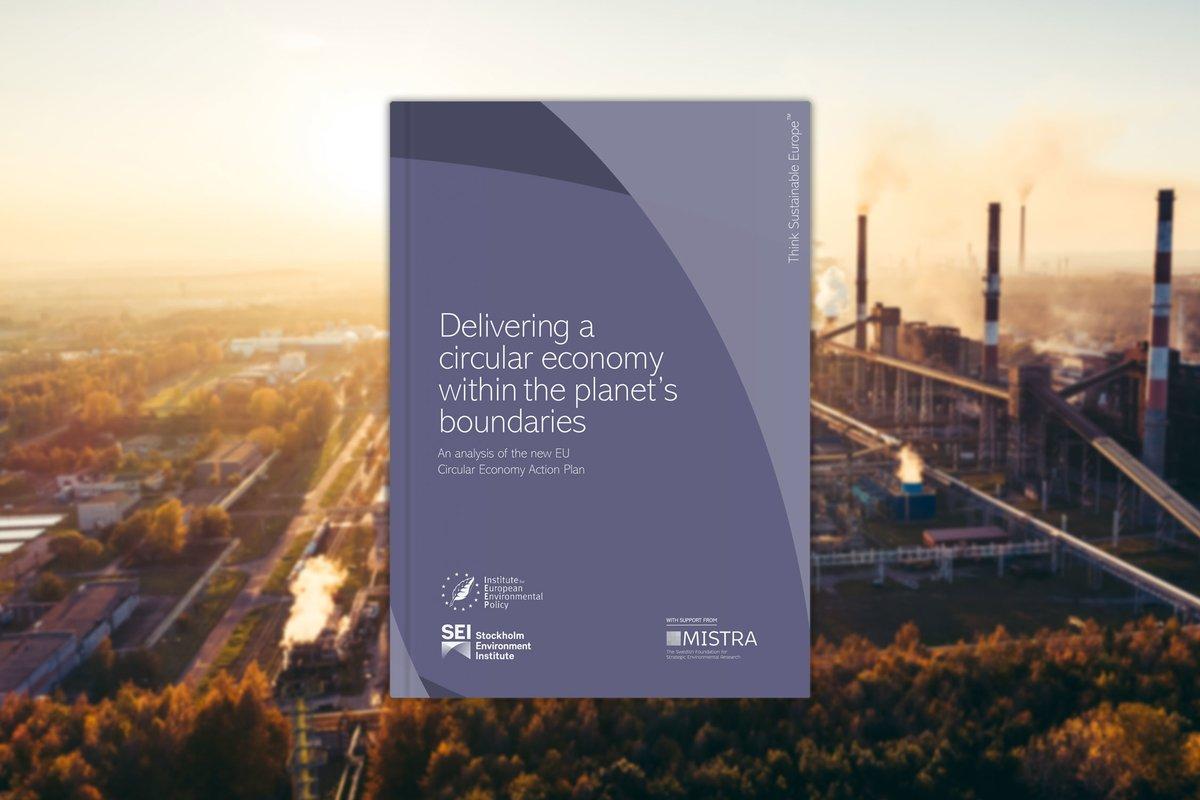AUTHORS: Mia Pantzar – Timothy Suljada
The following analysis assesses to what extent actions included in the new EU Circular Economy Action Plan that relate to demand may help reduce environmental pressures and contribute to a more circular European economy within the boundaries of the planet.
Time is quickly running out to prevent climate change from spiralling out of control and to stop ecological collapse – two impending scenarios that are closely linked to one another and driven to a large extent by our linear take-make-use-dispose economic model and the ever-increasing demand for natural resources.
It is clear from different pieces of research – applying different methodological approaches – that Europe is not living within the boundaries of the planet. Far from it. As one example to illustrate this unbalance: the EU has an ecological “footprint” of 4.7 global hectares (gha) per person, to compare with the global biocapacity of 1.7 gha per person. In other words, if everyone on the planet consumed like the average European, we would need almost three Earths to sustain the global economy.
| It is unlikely that supply-side tweaks alone will achieve the scale of change required in the time available |
Meanwhile, Europe is, to an increasing degree, externalising its pressures on key environmental issues onto other parts of the world. According to the European environment state and outlook 2020, between 30 and 60% of the environmental pressures associated with European consumption are on countries abroad where many goods are produced – this footprint on resources such as land, water and energy showed an upward trend in the period studied, while reductions on certain environmental pressures were seen within Europe.
Keeping track of consumption footprints globally, which requires good supply chain data and accounting, is increasingly recognised as critical to an inclusive transition to sustainability, including in the UN Sustainable Development Goals where material footprint is included as an indicator.
The idea of a circular economy is to decouple economic growth and prosperity from consumption of finite resources and to build economic, natural and social capital. While there is little yet to suggest that true “decoupling” works at the scale required, the European Commission has adopted circularity as the new economic paradigm for Europe, starting with the launch of its first EU Circular Economy Action Plan in 2015.
Circular Economy Action Plan 2020
The Circular Economy Action Plan, published by the European Commission on 11th March 2020, is a promising continuation of the EU executive’s ambition from 2015.
The plan acknowledges the need to address the block’s resource consumption and to reduce environmental pressures driven by consumption.
The following analysis assesses to what extent the actions included in the action plan may help deliver such reductions and contribute to a more circular European economy within the boundaries of the planet. It was written by the Institute for European Environmental Policy and the Stockholm Environment Institute, with input from the Mistra Foundation.

